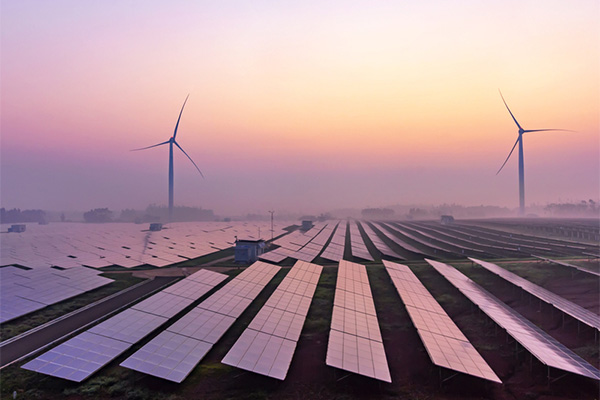Washington DC – Renewable energy sources (i.e., biomass, geothermal, hydropower, solar, wind) generated more electricity than either coal or nuclear in nearly 30 states during the first two-thirds of this year, according to a SUN DAY Campaign analysis of just-released data from the U.S. Energy Information Administration (EIA).
The latest issue of EIA’s “Electric Power Monthly” (with data through August 31, 2020) reveals that utility-scale renewables provided more electricity than coal in 27 states and Washington, DC. [1] In addition, only a narrow gap exists between renewables and coal in three other states.[2] Four states and Washington DC have generated no electricity from coal at all this year [3] while four others have each produced less than 100 gigawatt-hours (GWh) from coal during the past eight months.[4]
Similarly, renewably-generated electricity outpaced nuclear power in 29 states plus Washington DC.[5] Of those, 21 states, as well as Washington DC, produced zero electricity using nuclear power this year.[6]
Notably, renewable energy sources generated more electricity than either coal or nuclear in three of the nation’s four largest states (i.e., California, New York, and Texas). The six New England states have become a nearly coal-free zone while four of the region’s states produced no electricity using nuclear power. Renewables also generated more electricity in the five Pacific Ocean states (i.e., Alaska, California, Hawaii, Oregon, Washington) than coal and nuclear power combined.
Nationwide, renewable energy sources produced more electricity during the first eight months of this year than did either coal or nuclear power.* Including distributed (e.g., rooftop) solar, renewables accounted for 20.8% of the nation’s electrical generation during the first two-thirds of 2020 compared to 19.4% from nuclear and 18.4% from coal.
A year ago, renewables’ share was 18.7% compared to 19.3% from nuclear and 23.6% from coal. Thus far this year, wind is providing 8.0% of U.S. electrical generation and solar is contributing 3.4%.
“Falling wind and solar costs, renewable portfolio standards, and ever-greater concerns about climate change are driving a transition away from coal and nuclear power in a majority of the states,” noted the SUN DAY Campaign’s executive director Ken Bossong. “If current patterns continue – or even accelerate – it will not be many years more before coal and nuclear are relegated to niche markets by the mix of renewable energy sources.”
# # # # # # # # #
*The nationwide figures cited above include EIA’s “estimated small-scale solar photovoltaic” (e.g., rooftop solar systems) which account for almost a third of total solar output and about five percent of total net electrical generation by renewable energy sources. The state-specific data, though, includes only utility-scale facilities – i.e., facilities with a generating capacity of 1-MW or more.
NOTES:
[1] AK, AZ, CA, CT, DC, DE, GA, HI, IA, ID, KS, MA, MD, ME, MN, MT, NH, NJ, NV, NY, OK, OR, RI, SD, TX, VA, VT, WA
[2] LA, NC, TN (“a narrow gap” is being defined as a difference of less than 2,000 GWh during the first eight months of 2020)
[3] DC, CT, MA, RI, VT
[4] DE, ID, ME, NH,
[5] AK, CA, CO, DC, DE, IA, ID, IN, HI, KS, KY, MA, ME, MN, MT, ND, NE, NM, NV, NY, OK, OR, RI, SD, TX, UT, VT, WA, WV, WY
[6] AK, CO, DC, DE, ID, HI, IN, KY, MA, ME, MT, ND, NM, NV, OK, OR, RI, SD, UT, VT, WV, WY














Comments